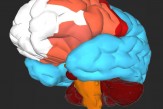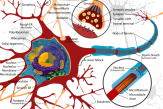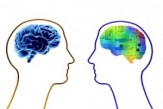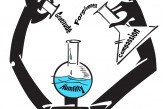Brain Info
t’s a big problem when people have trouble communicating. Especially when these people are research neuroscientists who find they use the same term for different things, or different terms for the same thing. As the eminent behavioral neurologist Dr. M.-Marsel Mesulem noted in 2000: There is no universal agreement on terminology, no distinct boundaries that demarcate one region from another, and, in most instances, no clear correspondence among lobar designations, traditional topographic landmarks, cytoarchitectonic boundaries, and behavioral specializations. Ouch.
From Wikipedia:
NeuroNames is an integrated nomenclature for structures in the brain and spinal cord of the four species most studied by neuroscientists: human, macaque, rat and mouse. It offers a standard, controlled vocabulary of common names for structures, which is suitable for unambiguous neuroanatomical indexing of information in digital databases. Terms in the standard vocabulary have been selected for ease of pronunciation, mnemonic value, and frequency of use in recent neuroscientific publications. Structures and their relations to each other are defined in terms of the standard vocabulary. Currently NeuroNames contains standard names, synonyms and definitions of some 2,500 neuroanatomical entities.
The nomenclature is maintained by the University of Washington and is the core component of a tool called “BrainInfo”.
One can either search by a structure name or locate the structure in a brain atlas and get information such as its location in the classical brain hierarchy, images of the structure, what cells it has, its connections and genes expressed there. Information can be accessed by any of some 16,000 synonyms in eight languages.
This is a useful tool for researchers in consciousness science. What the site lacks is a pragmatic estimate of which terms have reached a consensus for use by brain scientists. BrainInfo is now affiliated with the International Neuroinformatics Coordinating Facility as part of the growing effort to allow neuroscientists to name what they are talking about. The lack of a shared vocabulary highlights the relative youth of neuroscience and even more so of consciousness science.
About the Blog: Cool Runnings
Consciousness science is highly interdisciplinary, and COOL RUNNINGS will reflect this, featuring sites from all over the pedagogical map. — Dr. Henri Montandon
http://braininfo.rprc.washington.edu/
























